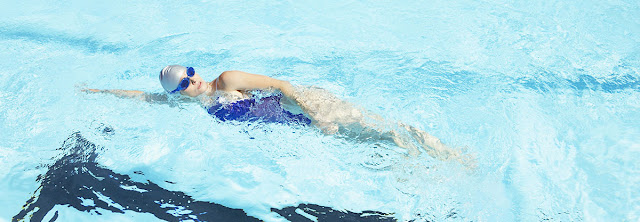Whether you're paddling around a pool or swimming in the sea, the basics of swimming remain the same. When swimming at significant depths, especially using seasickness gear, you must learn and follow safety precautions and techniques. For novice swimmers, the transition from shallow to deep water can be a significant transition with lifeguard recertification.
Shallow vs.
Deep Water: For Beginners
For the novice swimmer, paddling in deeper water can be
intimidating. Once you reach a depth where it is impossible to touch your feet,
you must be able to keep yourself afloat. While learning to swim under the
instruction of a qualified instructor, going straight into the deep end can
prove useful because the deeper water gives you room to run without touching
the bottom.
Move to
deeper water
Before you start swimming in deeper water, learn to float
effortlessly and confidently. Walk over to a pool where you can just touch your
toes. Spend a few minutes running water there, making long and gentle sweeping
scissors with your feet, and then move to a little deeper water. Continue
wading into the slightly deeper water, allowing your legs to fully extend
during each stroke. Only train this maneuver when a swim instructor or lifeguard
is available.
Deep water
diving
If you swim through deep water with the help of scuba gear,
your swimming style will change somewhat because you no longer have to
regularly come up to the surface for air. While you no longer have to worry
about breathing, you do need to keep a close eye on your oxygen supply system
as you swim. Because you have to divide your attention between the diving
equipment, the entry and exit procedures, and any sights you take in, swimming
at deeper levels is best done when you are highly skilled in basic swimming
strokes and can perform them effortlessly. To become certified to scuba dive,
you may need to swim 200 to 300 meters and demonstrate your ability to tread
water for at least 10 minutes.
Water depth
and speed
For competitive swimming, the depth of a pool and the depth
at which the athlete swims can affect performance and speed. The design of the
Water Cube pool used in the 2008 Beijing Olympics is 10 feet deep, making it 3
feet deeper than the previous standard for competition pools. org, Rowdy Gaines, an Olympian and swimming
commentator, partly credits the depth and overall design of the pool with the
many records broken during its use in the Olympics. If the bottom of the pool
is too close to the swimmer, friction between various currents of water can
slow the swimmer down with Lifeguard Course Va.
Basic
principles of proper swimming
I write about this in several articles on this site, and in
any case I will repeat it again here (if you have already read or understood
the topic, feel.
Proper swimming is swimming with your head in the water. .
Inhalation, of course, occurs as a result of lifting (in the front) or turning
(in crawling) the head, exhalation - in the water with the nose or mouth. You
must learn to swim.
Every person, and especially a child, instinctively tends to
raise his head - this is at least necessary for comfortable breathing. On the
other hand, putting your face in the water and swimming in this position is not
a very natural action for a human.
However, it
is correct to swim face down in the water:
• First, a
raised head disrupts the balance of the body, the legs and pelvis begin to sink
.
• Secondly,
it prevents the stretching of the body , violates the buoyancy.
• Thirdly,
if we are talking about long-term exercises, then tight cervical vertebrae and
compressed blood vessels are at least not good for health.
Correct
head position in freestyle swimming
Plus, since we're talking about learning, learning to swim
from scratch is also much easier with your head down , rather than up. By
lowering your face into the water and taking air into your chest, even the most
novice will be able to stay in the water with an asterisk (and that's half
way!), while with the head up it will be extremely difficult for a novice to
stay in the water.
Your goal is to teach the child to swim with his head down
in the water. That doesn't mean he'll keep swimming like this all the time. In
contrast, learned children bathe often, swimming crawling with their heads up.
But they already know how to swim, so the task of teaching them has been
accomplished.







0 Comments